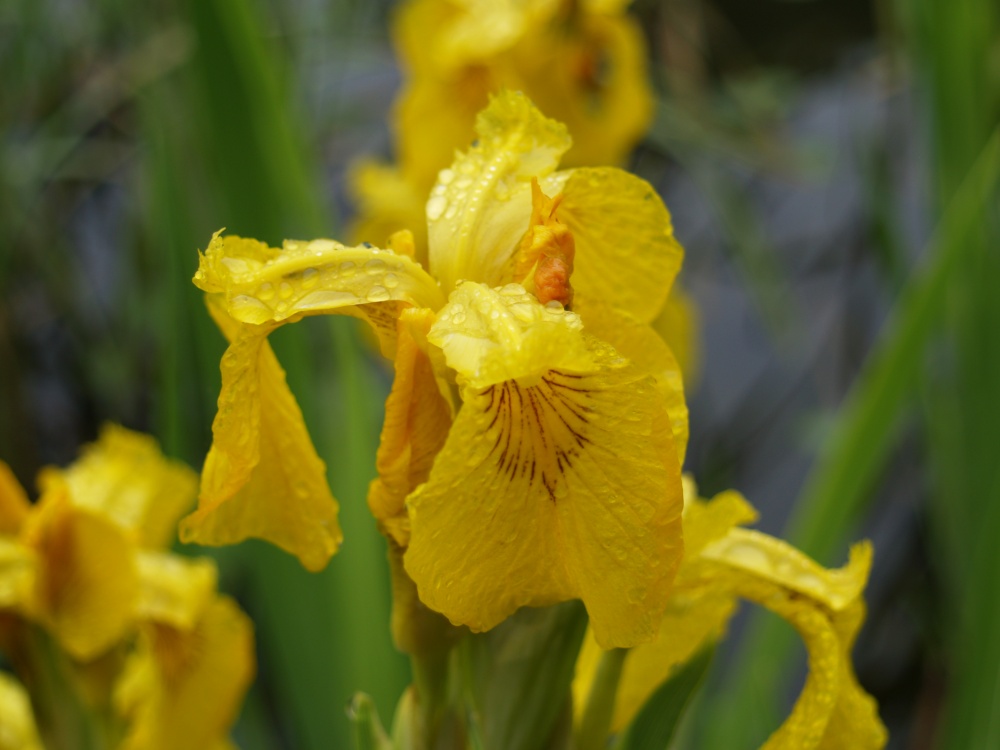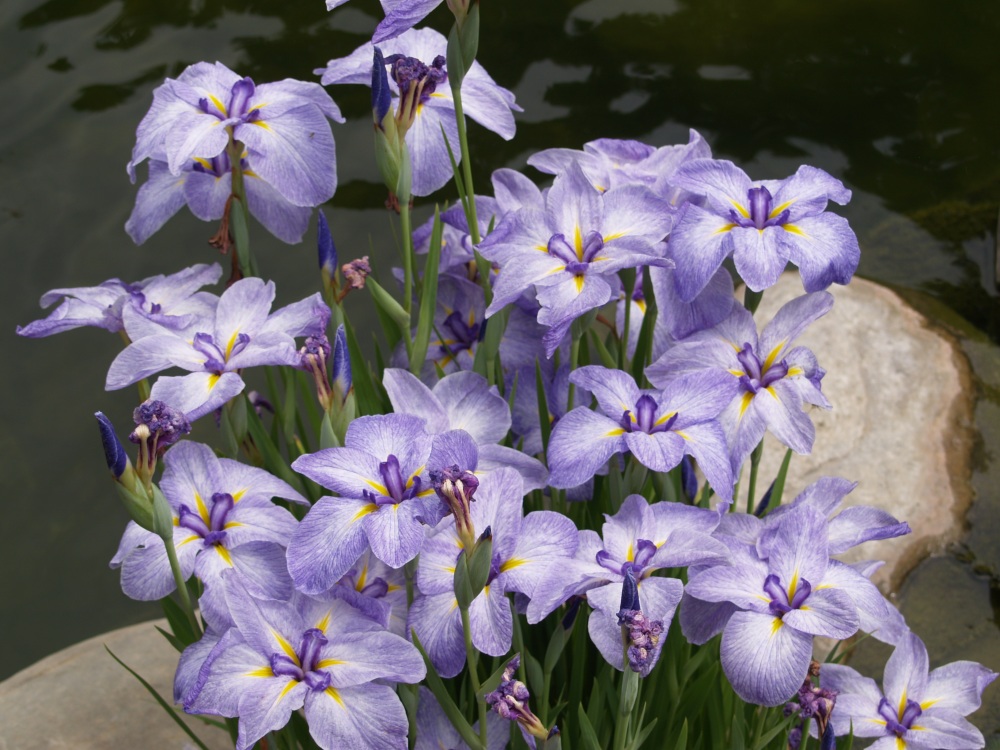In May frogs bellow at each other beneath the yellow blooms and eighteen inch tall foliage of Yellow Flag iris (Iris pseudoacorus, below). Hungry koi and goldfish lazily swim through the shallow water searching for a meal, and many thousands of tadpoles feed on bits of algae that cling to stones at the pond’s edge. 
I planted yellow flag long before there was much talk about invasive plants, and though it is frequently listed as invasive, in a garden pond there is little danger that it will escape into the wild so long as the gardener does not dispose of excess plants in an irresponsible manner. Yellow flag spreads by rhizomes and by water borne seed, and it’s very unlikely that seed will hop out of the pond and through the garden into the nearest waterway.
I’ve planted yellow flag, Louisiana (below), and Japanese irises at the margins of several of the garden’s five ponds, but not in the dirt bottom, wet weather pond at the rear of the property. This pond stays full through the spring, but is intermittently full and dry through the summer as it fills from rainwater draining from two neighboring properties. Since this pond is prone to overflow it would be very likely that yellow flag would escape. I’ve planted mint and variegated cattails to filter the water before it enters the pond, which then slowly percolates into the neighboring wetland. The wetland area is full of brambles and cattails, but no yellow flag, and I’m determined to keep it that way.
The largest colony of yellow flag I’ve planted is in the filtration area of the fifteen hundred square foot swimming pond that I constructed (below). Eight or ten plants have slowly spread through the gravel to cover two-thirds of the two hundred square foot filter, and I’ve not had to remove any overaggressive growth. Shallow areas in other parts of the pond have been invaded by plants that have grown from seed that is circulated by the pond’s pump, and earlier in the spring I had to remove a thick clump that was blocking half of the pond’s waterfall. In a few other spots yellow flag grows along side Japanese iris, sweetflag (Acorus calamus), variegated cattail, and rushes, but this is easily controlled and there seems no danger that it will take over.
Yellow flag was an appropriate choice for the filtration area because it was intended to spread to assist in filtering water that flows up through the deep gravel filter. The roots of the iris take in excess nutrients in the pond’s water that would feed algae growth, and most other pond plants would not accomplish the job so efficiently.
Yellow flag is now passing out of bloom, and in another week the first of the multi colored Japanese irises (Iris ensata, above) will begin to flower. The Japanese iris are beautiful, and they spread into nice clumps, but they are not as useful in filtering the pond’s water as yellow flag.
My goodness, your garden is beautiful!!!